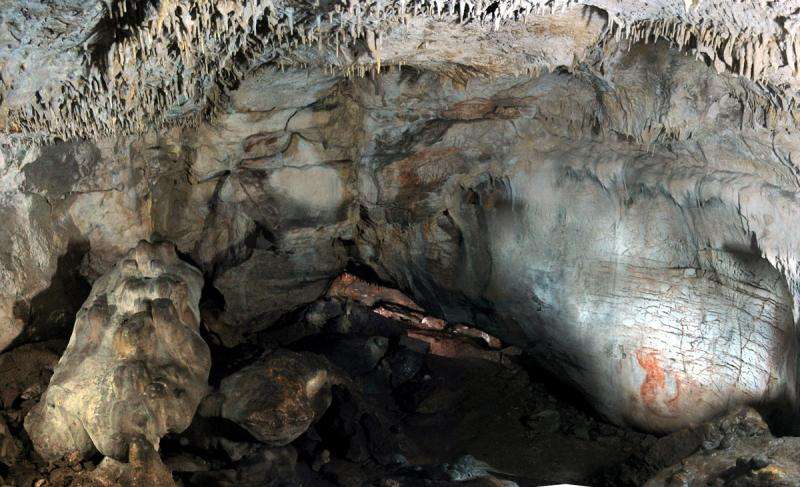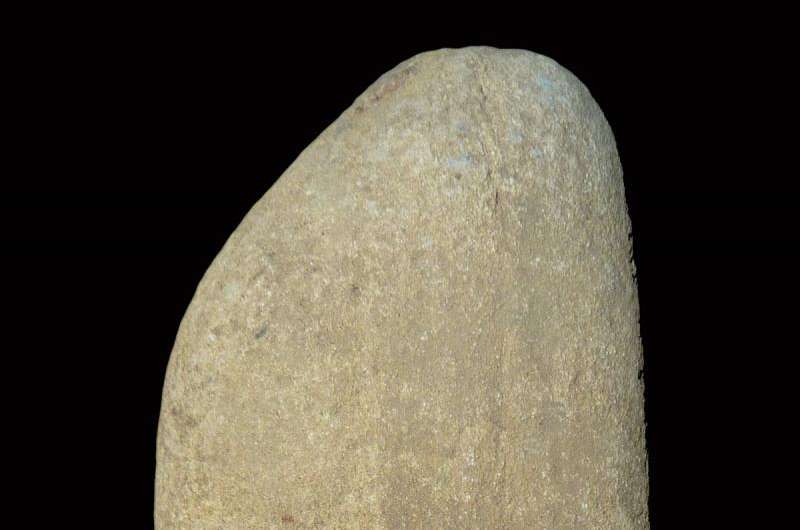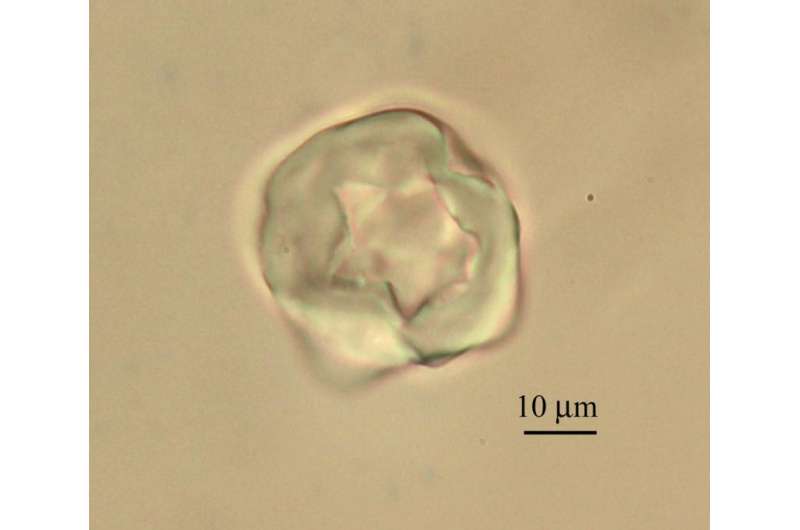Interior of Grotta Paglicci, Italy, with wall paintings. Credit: Stefano Ricci
(Phys.org)—A team of researchers from a variety of institutions in Italy has found evidence of oat grinding by Upper Paleolithic hunter-gatherers—a stone pestle with bits of grain still intact. In their paper published in Proceedings of the National Academy of Sciences, the team describes the stone relic and their study of it and offers some theories on why they believe the early people were grinding grains.
In what the researchers describe as the earliest known example of the consumption of oats, the pestle, which was found in Grotta Paglicci (a cave first discovered in the 1950's) in Southern Italy, represents an attempt by early Europeans to make oat grain more palatable. A closer look at the grain remains on the pestle revealed that they had been heated prior to grinding, a sign of an attempt to dry it before processing, just as is done today. The resulting powder, a type of flour, the group notes, was then likely used to make a type of porridge or perhaps as the main ingredient in a baked bread.
The relics at the Grotta site have been dated back to approximately 32,000 years ago and were left by a people known as the Gravettian culture—hunter-gathers that also left behind paintings on cave walls, other works of art, evidence of technology and an elaborate burial system. Heating grains before processing would have made sense, the team notes as the climate was much colder and wetter during that period. They also note that grinding oats into flour would have made it easier to carry as people moved to new locations in search of food and to store it over a long cold winter.
Grinding stone from Grotta Paglicci, Italy. Credit: Stefano Ricci.
It is not likely that the early people were cultivating the oats—scientists believe farming did not come about till much later—instead, those early people had to walk about looking for specific plants that had the types of grains they could use, gather them together and then grind and store them—a laborious process, but one apparently well worth the effort. They note that other grinding stones dating back to roughly the same time frame have been found before, but they were used to grind roots and cattails—they suspect more study will result in finding that more stones were used to grind grains as well.
Swollen, gelatinized starch grain from the Paglicci grinding stone. Credit: Marta Mariotti Lippi
More information: Multistep food plant processing at Grotta Paglicci (Southern Italy) around 32,600 cal B.P., PNAS, dx.doi.org/10.1073/pnas.1505213112
Abstract
Residue analyses on a grinding tool recovered at Grotta Paglicci sublayer 23A [32,614 ± 429 calibrated (cal) B.P.], Southern Italy, have demonstrated that early modern humans collected and processed various plants. The recording of starch grains attributable to Avena (oat) caryopses expands our information about the food plants used for producing flour in Europe during the Paleolithic and about the origins of a food tradition persisting up to the present in the Mediterranean basin. The quantitative distribution of the starch grains on the surface of the grinding stone furnished information about the tool handling, confirming its use as a pestlegrinder, as suggested by the wear-trace analysis. The particular state of preservation of the starch grains suggests the use of a thermal treatment before grinding, possibly to accelerate drying of the plants, making the following process easier and faster. The study clearly indicates that the exploitation of plant resources was very important for hunter–gatherer populations, to the point that the Early Gravettian inhabitants of Paglicci were able to process food plants and already possessed a wealth of knowledge that was to become widespread after the dawn of agriculture.
Journal information: Proceedings of the National Academy of Sciences
© 2015 Phys.org
























